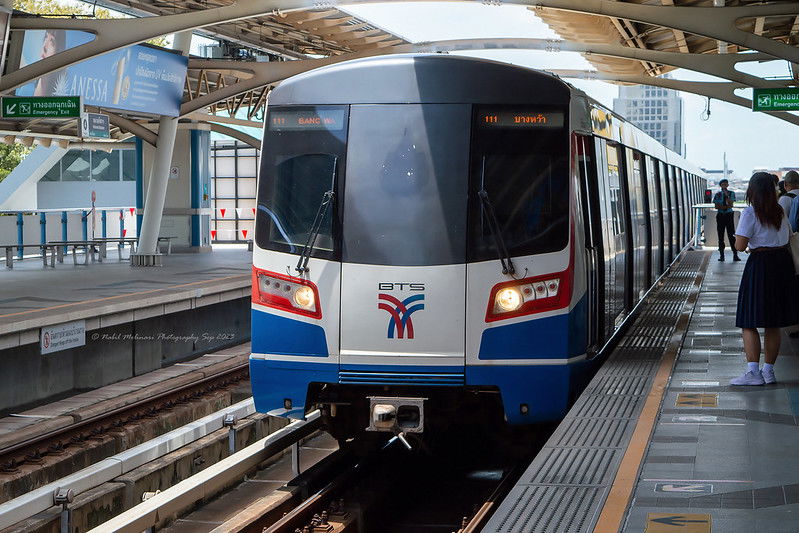What is the BTS Skytrain in Bangkok and How Does It Work? – All You Need to Know in One Guide!
Bangkok is the kind of city where something adventurous, fun, and memorable awaits at every corner. Exploring this tourist playground is easier when you take the BTS train. If you’re visiting for the first time, you’ll want to know everything there is to know about the BTS. It’s an affordable way to get around the city, all while enjoying the skyline. In this article, you’ll learn all about the BTS Skytrain for a smooth travel experience in Bangkok.
MRT and BTS
Bangkok offers several ways of getting around, but the BTS and the MRT are the easiest and most affordable. What’s the difference between the two? The tracks.The MRT mostly runs underground, while the BTS runs on elevated tracks above ground.The Bangkok BTS has 62 stations, and the MRT has 54 stations. Both trains are comfortable and air-conditioned, so you’re guaranteed a pleasant journey.
Bangkok BTS Skytrain Route
There are two BTS lines: the Sukhumvit Line and the Silom Line.
- The Sukhumvit Line
This line runs from Kheha Samutprakan Station to Khu Khot Station, passing through three regions: Pathum Thani, Bangkok, and Samut Prakan. It’s 54.25 kilometres long, with 47 stations. The line also passes by popular tourist attractions.
- The Silom Line
With two branches, the Silom Line covers the route from Bang Wa Station to National Stadium Station. The line has a total of 14 stations, with the last stop being the National Stadium BTS Station.If you intend to use the BTS throughout your stay in Bangkok, choose your accommodation wisely. Make sure it’s easy to access from the BTS stations. You won’t have to look for too long before finding the perfect place, though. Hotels in Bangkok Thailand are diverse and include properties from brands like Chatrium Hotels and Residences.
Using the BTS Skytrain
The most cost-efficient way to use the BTS is to get a Rabbit Card. You can top it up and pay as you go. The Rabbit Card is much cheaper than buying a single ticket every time you want to use the BTS. The card often comes with discounts too, and there are multi-day passes. One thing to note is that some of the BTS routes are operated by a private company, while others are run by the city. The Rabbit Card can only be used for the private lines. For the city-run sections, you’ll need cash. This might sound a bit confusing, but it only applies to the multi-day passes. If you get a single-day pass, everything is included in that one price.
Operating Hours
The BTS operates from 6 AM to midnight. Bangkok is a busy city, so the BTS trains get extremely crowded during the rush hours in the morning and evening. It’s best to avoid these rush hours and plan your journey for after 10 AM, before 4:30 PM, and after 7:30 PM.
BTS Skytrain Fare
Someone from South Asia might consider the BTS to be a bit expensive, but if you’re from Europe or North America, you’ll find the BTS to be highly affordable. Fares don’t remain the same; they tend to change from time to time. A single ride usually costs about 16 baht and can go up to 60 baht, depending on the distance travelled. If you’re planning to travel frequently during the course of a single day, it’s best to get a one-day ticket, which costs about 140 baht. Your kids ride the BTS for free as long as they’re shorter than 90 cm. If you’re using a Rabbit Card, there are often discounts available.
How to Pay
Getting a Rabbit Card is the best way to pay for your journey. It eliminates the need to pay for single tickets every time you use the BTS. The card costs 200 baht and is valid for five years. The top-up amounts are valid for two years.

